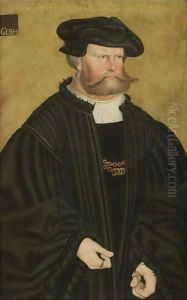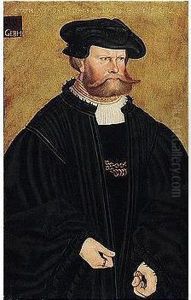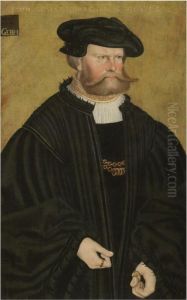Hans Doring Paintings
Hans Döring, also known as Johann Döring, was a German Renaissance painter and illustrator, born around 1490 in Wittenberg, Germany. Not to be confused with Hans Dürer, the brother of the famous Albrecht Dürer, Döring was an artist in his own right, though he did not achieve the same level of fame as some of his contemporaries. He is known to have been active during the early 16th century, a time of great artistic and intellectual ferment in Europe, particularly within the German regions.
Döring's work included religious themes common for the period, as well as portraiture. However, much of his life and work have not been thoroughly documented, and as such, there is limited information available about his specific contributions to the art world. What is known is that he operated within the sphere of influence of Martin Luther and was active in the city of Wittenberg, which was a center of the Protestant Reformation. It is possible that he contributed to the spread of Reformation ideas through his art, either by illustrating pamphlets or by painting works that reflected the changing religious climate.
Unfortunately, specific examples of his works are scarce or have been attributed to him with some uncertainty. The historical record on Döring does not provide a clear catalog of his pieces or a detailed account of his artistic career. He passed away in 1558, leaving behind a modest legacy that has been largely overshadowed by the prominent artists of his era. Nonetheless, Hans Döring's career sheds light on the broader tapestry of German Renaissance art, illustrating the diversity of artists and styles present during this transformative period.


